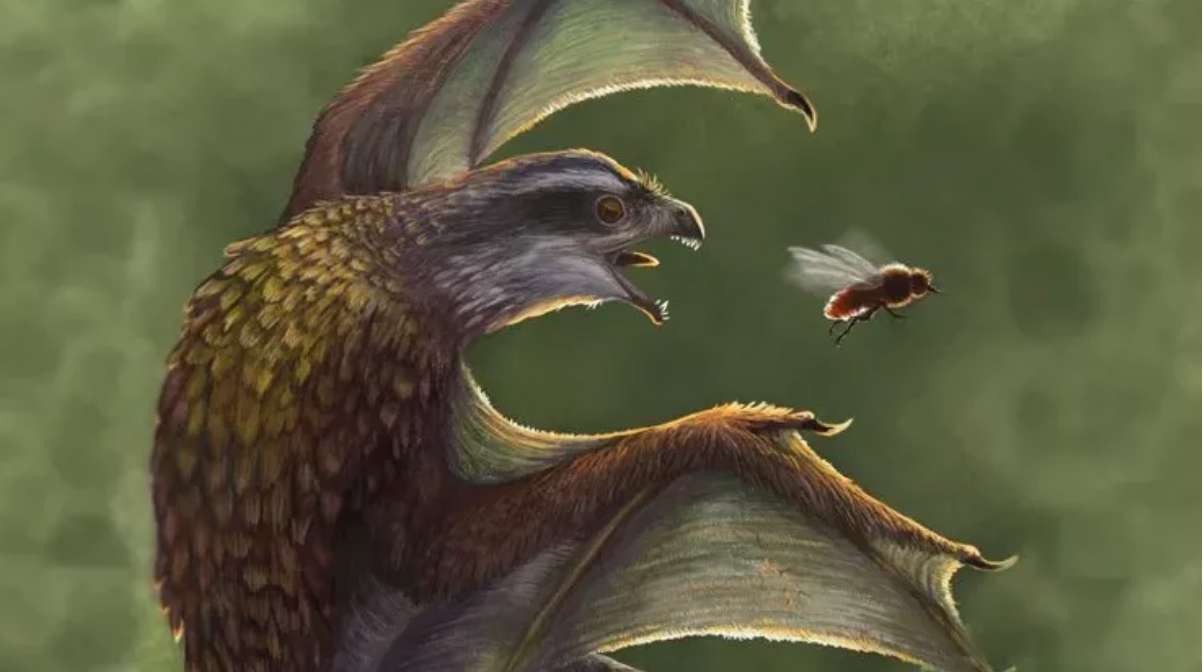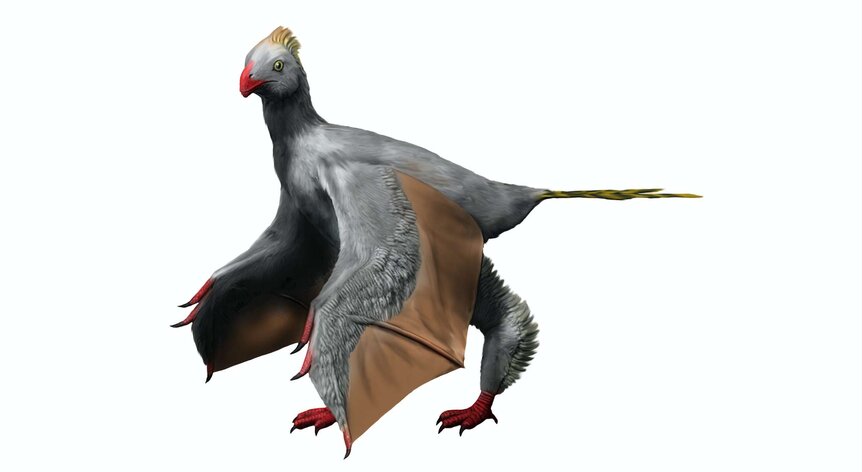Create a free profile to get unlimited access to exclusive videos, sweepstakes, and more!
Despite having wings, these ferocious bat-like dinosaurs were actually terrible fliers

When it comes to soaring the unfriendly skies of prehistoric Earth, just because you had a pair of functional wings didn't immediately make you a fantastic flier.
Case in point, a new research paper by American and Chinese scientists recently published in iScience. It took two previously discovered bat-like dinosaurs and explored the reality of just how adept these creatures were when they attempted to take flight — and the results were not that impressive.
The previous discovery of two species of small predatory theropod dinosaurs that lived roughly 160 million years ago during the Late Jurassic, catalogued as Yi qi and Ambopteryx longibrachium, was a boon to paleontologists attempting to piece together clues as to how ancient dinosaurs evolved into modern birds.
Both creatures sported elegant, elongated fingers combined with a membrane skin stretching between the digits and resembling bat wings. These appendages are different than the sort of wing structure theropods eventually evolved with to enable them to leave the primeval ground.
Yi and Ambopteryx became extinct within a few million years, pointing to the conclusion that these veiny proto-wings were not selected by nature to carry forth their species into the future. Evolutionary failures were bound to occur and multiple modes of flight may have been attempted before the correct genetic cocktail was attained.
Back in 2015 when fossilized specimens of Yi qi were unearthed, scientists first believed the beast was potentially capable of gliding amid the treetops, but some were wary of this lofty notion as the animal's center of mass was not conducive to smooth sailing.
"Using laser-stimulated fluorescence imaging, we re-evaluate their anatomy and perform aerodynamic calculations covering flight potential, other wing-based behaviors, and gliding capabilities," the researchers concluded. "We find that Yi and Ambopteryx were likely arboreal, highly unlikely to have any form of powered flight, and had significant deficiencies in flapping-based locomotion and limited gliding abilities."
By carefully modeling how the winged dinosaurs might have become airborne, the crew made adjustments for variables like weight, wingspan, strength, and muscle placement to determine that the pair were probably clumsy fliers at best.
"They really can't do powered flight," says co-author, biologist Thomas Dececchi from Mount Marty University. "You have to give them extremely generous assumptions in how they can flap their wings. You basically have to model them as the biggest bat, make them the lightest weight, make them flap as fast as a really fast bird, and give them muscles higher than they were likely to have had to cross that threshold. They could glide, but even their gliding wasn't great."
Dececchi and his colleagues figured out the the two creatures were even more ackward fliers than plump chickens and even less admirable than the kakpoo, a flightless New Zealand parrot.
"We propose that this clade was an independent colonization of the aerial realm for non-avian theropods. If true, this would represent at least two, but more likely three or more attempts at flight (both powered and gliding) by small pennaraptoran theropods during the Mesozoic," the team indicates in their research.
"Given the large number of independent occurrences of gliding flight within crown mammals, this should perhaps be unsurprising, but it does create a more complex picture of the aerial ecosystem."



























